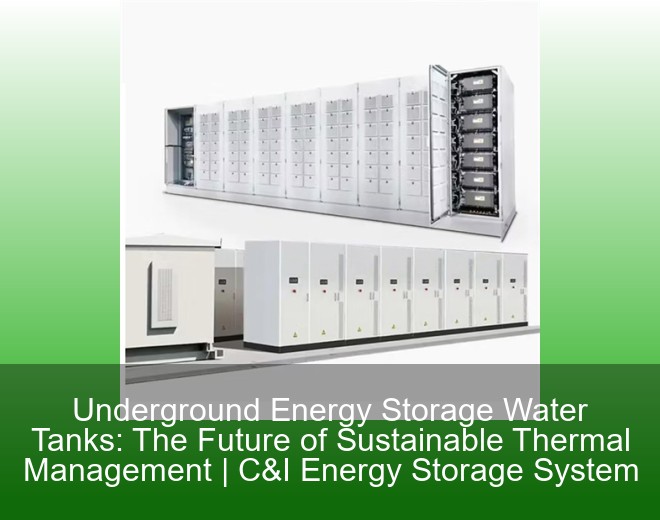
Ever wondered how your smartphone magically "remembers" its charge overnight? Or how solar farms keep lights on when the sun clocks out? The secret sauce lies in power storage modules – the unsung heroes of our electrified world. Let's crack open this technological piñata and see what makes it tick. [2025-08-11 18:05]

Ever wondered why your smartphone doesn’t die during a 3-hour Zoom call? Or how solar farms keep lights on when the sun clocks out? Meet energy storage components – the backstage crew making modern energy magic happen. This article speaks to: [2025-08-10 20:43]

Let's face it – our current energy storage solutions are like trying to pour Lake Superior into a teacup. As renewable energy adoption skyrockets, we're facing a global energy storage bottleneck that could make or break our climate goals. The theoretical strongest energy storage systems aren't just lab curiosities anymore; they're becoming the linchpin of our energy future. From solid-state batteries that could power planes to hydrogen storage solutions mimicking plant photosynthesis, the race is on to crack the code of perfect energy preservation [6][8]. [2025-08-05 20:01]

It's 8 PM, your solar panels have clocked out for the day, and your Netflix binge suddenly turns into a real-life blackout drama. Enter home solar energy storage batteries – the unsung heroes that keep your lights on when the sun takes a coffee break. These mobile power banks for your house are rewriting the rules of energy independence, one charged electron at a time. [2025-08-04 16:08]

Ever wondered how your solar panels keep the lights on after sunset? Enter the solar panel energy storage device diagram – the unsung hero turning daylight into nighttime delight. These systems aren't just fancy batteries; they're your ticket to energy independence. Let's crack open the toolbox and see what makes these devices tick. [2025-08-04 00:23]

Let’s face it—modern life runs on electricity, but storing it? That’s like trying to save sunlight in a jar. Enter electrical technology of energy storage systems (ESS), the unsung hero keeping your lights on and Netflix binge-worthy. This article is your backstage pass to how ESS works, why it’s *kind of a big deal*, and where it’s headed. Whether you’re an engineer, a sustainability geek, or someone who just hates blackouts, stick around. We’ve got data, dad jokes, and zero fluff. [2025-08-01 07:55]

If you’ve ever shopped for a portable energy storage pack, you’ve probably noticed one thing: nearly all of them are 12-volt systems. But why 12V? Is it a random industry quirk, or is there science and strategy behind this standard? Let’s unpack the mystery—no electrical engineering degree required! [2025-07-28 01:29]

If you’re here, you’re probably part of the renewable energy revolution—maybe a tech enthusiast, a solar farm operator, or even a homeowner tired of erratic power bills. Energy storage lithium batteries (ESLBs) are no longer niche gadgets; they’re the backbone of modern energy solutions. Whether you’re researching grid stability or planning a backyard solar setup, this blog is your cheat sheet for everything ESLB-related. And hey, if you’ve ever wondered how batteries can outsmart weather-dependent solar panels, stick around—we’ve got answers. [2025-07-26 13:04]

engineers scratching their heads over energy bills, urban planners sweating (literally) about carbon footprints, and eco-warriors dreaming of net-zero cities. If you’re in any of these camps, welcome! Underground energy storage water tanks are like the Swiss Army knives of thermal management—solving multiple problems while hiding beneath our feet. These systems store excess heat or cold in water reservoirs underground, ready to be tapped when needed. Think of them as giant thermal piggy banks for buildings, factories, or even entire neighborhoods. [2025-07-26 09:20]

Let’s face it—the energy world is changing faster than a Tesla Model S Plaid. With global energy storage projected to become a $490 billion market by 2030[1], Polansa solar energy storage equipment emerges as the Swiss Army knife of renewable energy solutions. Imagine having a power bank for your entire house that laughs in the face of blackouts. That’s essentially what we’re talking about here. [2025-07-26 01:28]

Ever tried assembling IKEA furniture without the manual? Yeah, that’s what installing power tool batteries feels like when you wing it. With the global energy storage market projected to hit $50B by 2026[10], getting your cordless tool batteries right isn’t just about finishing weekend projects – it’s about riding the green energy wave without shocking yourself (literally). [2025-07-22 14:37]

Let’s face it—energy storage unit batteries are like the backstage crew of a rock concert. You don’t see them, but without their grit, the show (read: your lights, phones, and Netflix) grinds to a halt. With renewable energy sources like solar and wind surging globally—accounting for 30% of electricity generation by 2023[5]—these batteries have become critical for keeping the lights on when the sun dips or wind slows. The global energy storage market? A jaw-dropping $33 billion industry[3]. Not bad for a tech that’s essentially a glorified power bank, right? [2025-07-22 09:52]
Enter your inquiry details, We will reply you in 24 hours.
Brand promise worry-free after-sales service